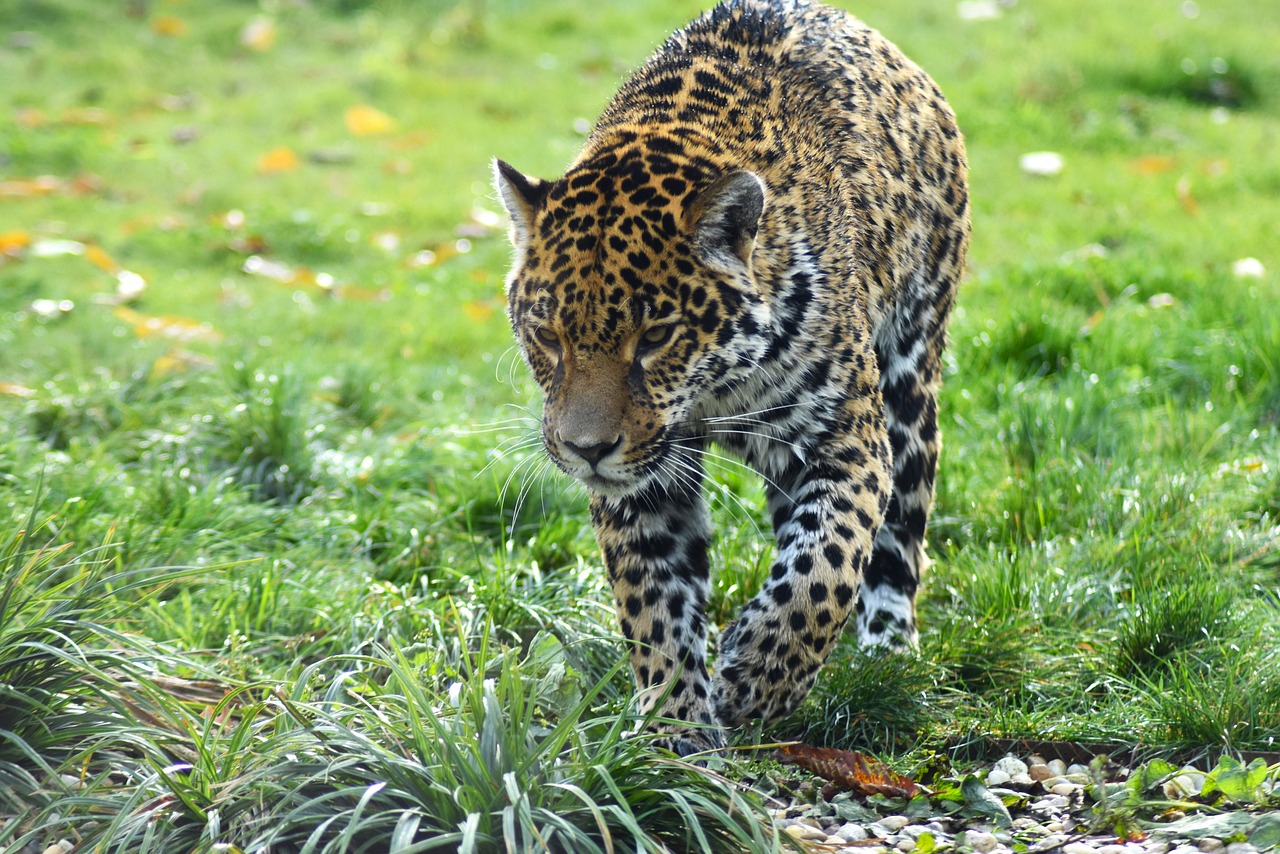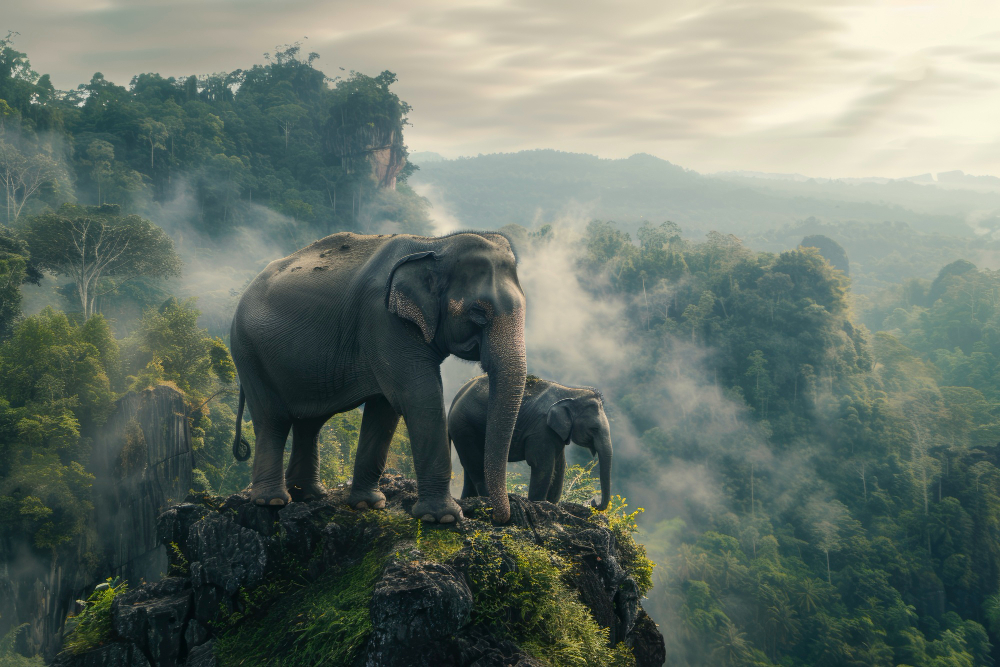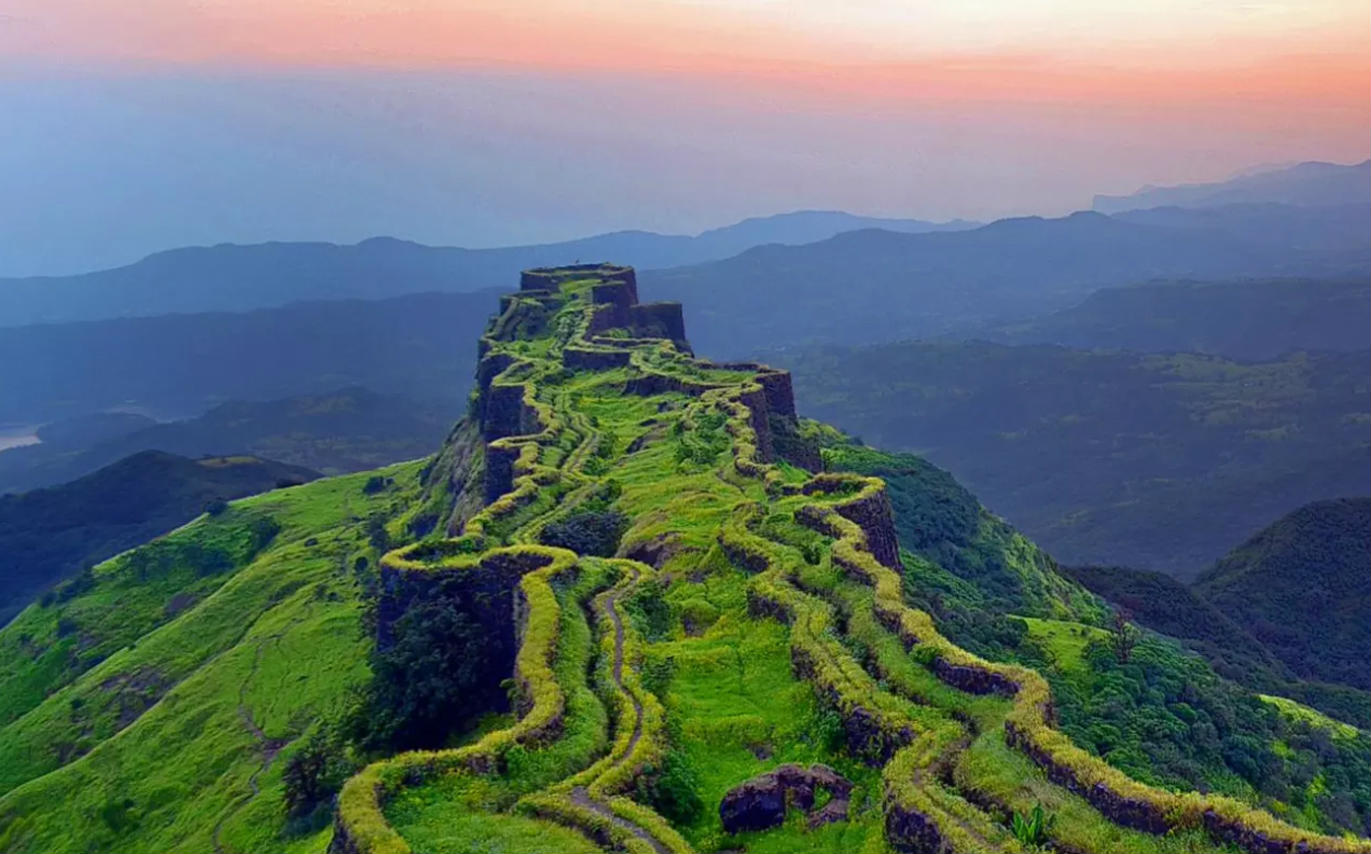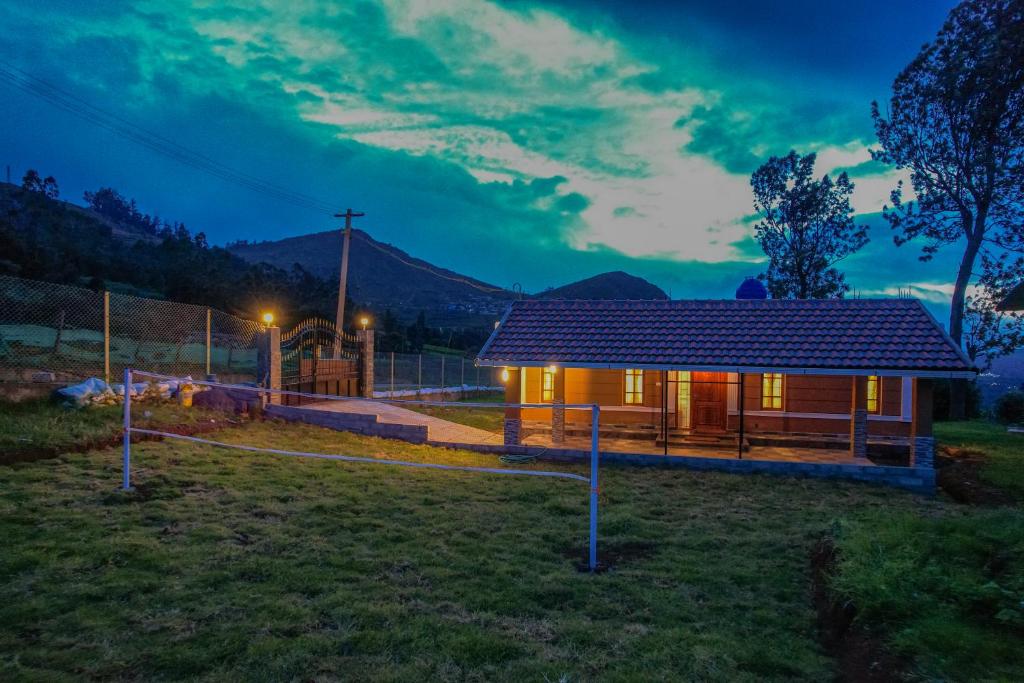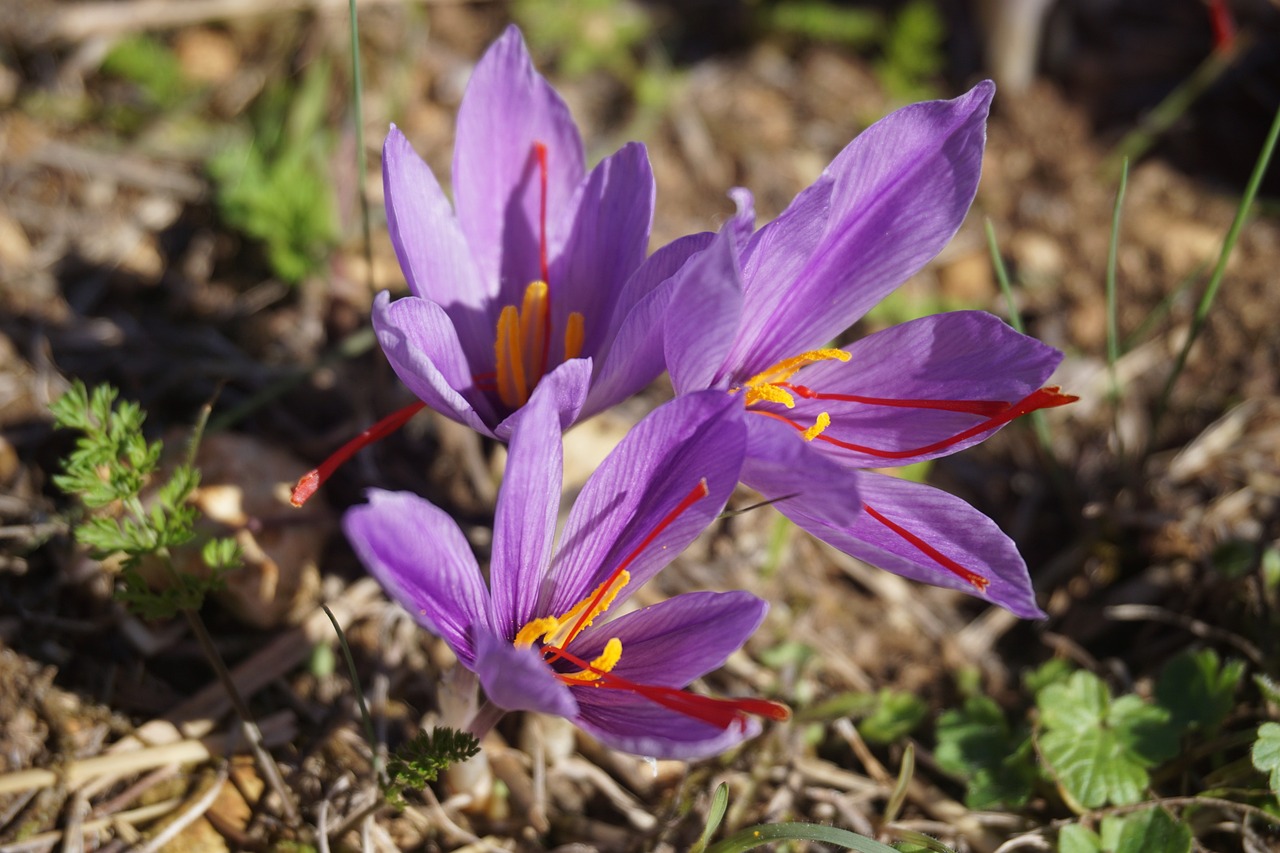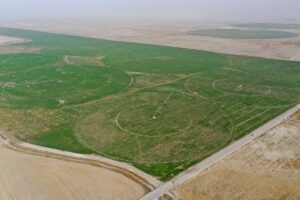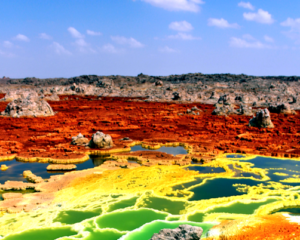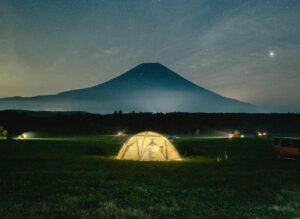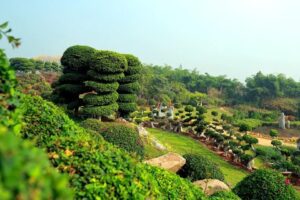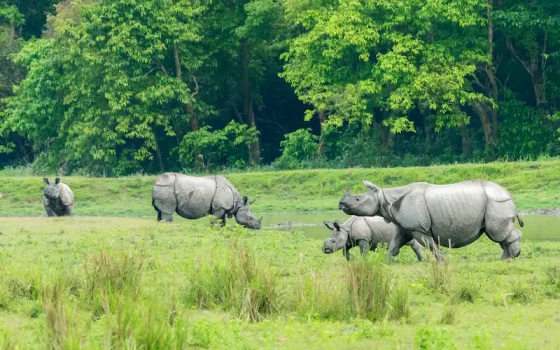 Pin
Pin Photo from Wikimedia Commons
Kaziranga National Park stands tall as a sanctuary where wildlife roams free and nature maintains its balance. Located in the northeastern state of Assam, this reserve is not just home to the famed one-horned rhinoceros but also shelters rare migratory birds, wild elephants, swamp deer, and elusive predators like tigers and leopards. It’s a living, breathing masterpiece of Earth’s evolutionary process.
The park’s terrain is dramatically varied—sprawling grasslands, thick woodlands, and winding riverine habitats—all offering refuge to countless species. Its dynamic landscape changes with the rhythm of the mighty Brahmaputra River, creating seasonal floodplains that enrich the soil and nurture fresh vegetation. These cycles feed an endless chain of life that has thrived here for centuries.
Visitors are struck not just by the sheer number of species, but the harmony in which they co-exist. Kaziranga is a realm where biodiversity isn’t a statistic—it’s a feeling, a presence that humbles the soul.
Table of Contents
The One-Horned Guardians of the Grasslands
No creature symbolizes Kaziranga more than the one-horned rhinoceros, a majestic animal that’s been brought back from the brink of extinction thanks to decades of careful conservation. These rhinos roam the tall elephant grass with quiet power, their armor-like skin rippling as they move, commanding respect without ever asking for it.
It’s a surreal experience to watch them graze or wallow in mud pools under the golden light of dawn. In Kaziranga, they are not zoo exhibits—they are kings and queens of an ancient domain. Often accompanied by herds of deer or wandering elephants, they remind visitors that true wilderness is not a theme park—it’s unpredictable, raw, and beautifully unscripted.
This park boasts the largest population of one-horned rhinos in the world, and yet, seeing even one feels like witnessing a secret that nature rarely reveals. This blend of vulnerability and strength is what keeps Kaziranga unforgettable long after the visit ends.
The Secret Symphony of Birds in the Marshes
As dawn breaks over the wetlands, Kaziranga bursts into a chorus of bird calls—haunting, melodic, and sometimes jarringly beautiful. Over 500 species of birds make this park their temporary or permanent home, transforming the sky and trees into a living orchestra. From the endangered Bengal florican to vibrant bar-headed geese and giant storks, every branch and reed hides a feathered wonder.
Birdwatchers often describe Kaziranga not just as a visual paradise but as an acoustic one. The whistle of a spotted owl, the sudden flurry of parakeets, or the gliding silence of a fishing eagle—each sound marks the rhythm of an ecosystem alive and alert. For those with patience, the reward is profound.
The migratory season paints the park in new colors as visitors from Siberia and Central Asia arrive. These fleeting guests remind us of how connected our world is, where a patch of Assam becomes a resting place for travelers thousands of miles away.
Tigers in the Tall Grass—The Invisible Hunters
Kaziranga may be best known for its rhinos, but it also hides one of the most elusive predators—the Bengal tiger. Unlike in other sanctuaries where tigers dominate the spotlight, here they rule from the shadows. Thick elephant grasses often conceal their presence, making a sighting rare and electrifying.
The silence before a tiger emerges is almost sacred. Even seasoned guides fall quiet, sensing a shift in the air. These big cats are stealth masters, relying on instinct, silence, and patience. When one does appear, it’s never forgotten—the slow, deliberate walk, the glint in its eyes, the ripple of muscle under striped fur. It’s nature’s royalty in motion.
Kaziranga has one of the highest densities of tigers in India, but its terrain makes them harder to spot. Yet, this mystery only adds to their allure. They are not here for our spectacle—they are reminders of nature’s hierarchy and how small we truly are in their ancient kingdom.
Gentle Giants and Their River Rituals
In Kaziranga, elephants do not perform—they live. Watching a herd cross the wetlands or bathe in the Brahmaputra’s tributaries is a moment that stays etched in memory. These gentle giants, with their matriarch-led groups and slow, steady grace, bring a different rhythm to the landscape.
Elephants are central to the park’s ecosystem. They trample through dense undergrowth, clearing paths for smaller animals. They feed on trees and grasses, reshaping the terrain in small but meaningful ways. And when they play—splashing water or rolling in mud—it feels like the earth itself is laughing with them.
Sunsets are often the best time to spot them—silhouetted against a flaming sky, tusks gleaming, trunks raised in greeting or curiosity. In these moments, the line between human and animal blurs. There is no rush, no noise—just the quiet awe of watching creatures that carry the memory of the forest in every step they take.
Swamp Deer and the Pulse of the Floodplains
Amid the reeds and waterlogged plains of Kaziranga, swamp deer—also known as barasingha—move like golden apparitions. Their antlers rise like tangled branches, swaying as they wade through marshy waters. These graceful creatures are perfectly adapted to the wet terrain, thriving in places where few large mammals dare to go.
They aren’t just beautiful to look at; they’re vital indicators of ecosystem health. Their presence tells a story of balanced wetlands, rich grasses, and low human disturbance. Predators like tigers often trail them silently, which makes every sighting a quiet moment layered with tension and wonder.
In the monsoon season, the floodplains swell, and the deer retreat to higher ground. This ancient ritual of movement echoes the rhythm of the park itself. It’s not just survival—it’s memory passed through generations, instincts carved by water and time. Watching them leap through tall grass is to witness life in motion, pure and wild.
Safari Adventures
In Kaziranga, a safari is not a tour—it’s a journey into the wild where nature calls the shots. Tourists don’t just observe; they become part of a quiet, unfolding drama. Every ride begins with hushed excitement, engines revving softly at dawn or dusk when the forest breathes a little louder.
Jeep safaris are guided by seasoned locals who read the land like a map of stories. A distant call, a broken twig, fresh pawprints in the mud—each clue may lead to a rhino crossing, an elephant herd moving through fog, or even a glimpse of a tiger between the grass. There’s no guarantee of sightings, and that’s the thrill. The forest doesn’t perform—it reveals.
For those seeking a more intimate pace, the elephant safari offers a timeless view. From atop these gentle giants, tourists can reach marshy corners where jeeps can’t go. The silence is deeper, the sights closer, and the feeling unforgettable. It’s not just a safari—it’s stepping respectfully into nature’s domain.
The Lifeline of the Brahmaputra River
The Brahmaputra River isn’t just a scenic backdrop in Kaziranga—it’s the lifeline that nourishes every inch of the park. Flowing along the park’s northern boundary, this mighty river floods the plains during monsoon, transforming dry grasslands into wetlands brimming with new life.
These seasonal floods are not destructive—they’re regenerative. They bring fresh silt, spread seeds, and recharge the park’s natural rhythms. Fish spawn in shallow waters, migratory birds descend in flocks, and the vegetation springs back greener than ever. Without the Brahmaputra’s pulse, Kaziranga would not be what it is—alive, diverse, and always evolving.
But the river also demands respect. Locals, forest guards, and wildlife have adapted to its moods. Elevated watchtowers and eco-lodges stand ready each year, embracing the flood instead of fearing it. For tourists, a boat ride along the Brahmaputra is more than just scenic—it’s witnessing the force that breathes life into one of the planet’s richest ecosystems.
People of the Edge—The Communities Around Kaziranga
Kaziranga’s story isn’t told by animals alone. Surrounding the park are vibrant Assamese communities who have lived in harmony with the wild for generations. Farmers, artisans, forest guides, and rangers form an invisible web of support that keeps this ecosystem alive and thriving.
These people know the forest like family. Their folklore speaks of tigers not as threats but as spirits. They celebrate festivals that align with nature’s calendar and pass down stories of animals with the same reverence as gods. Many locals now work in conservation, guiding tourists or serving as foot patrols, protecting what once protected them.
Living beside such wild beauty isn’t easy. Elephants raid crops, floods can sweep away homes, and encounters with wildlife are part of daily life. Yet, there is resilience here—a quiet pride. Visitors who take time to learn from these communities often leave with a deeper understanding. Kaziranga isn’t just about the forest. It’s about the people who live with it, not against it.
Conservation Against the Odds—A Battle Worth Fighting
Kaziranga’s breathtaking beauty masks a constant battle fought behind the scenes—one of conservation against relentless threats. Poaching, encroachment, climate change, and human-wildlife conflict loom large. Yet, the park stands strong, thanks to tireless efforts by forest officials, NGOs, and local communities.
Armed rangers patrol night and day, risking their lives to protect rhinos and tigers. Camera traps, drones, and digital tracking have become vital tools in monitoring wildlife and deterring illegal activity. Conservation here is not just reactive—it’s evolving. Science, tradition, and dedication walk hand in hand in this daily defense of the wild.
Despite these efforts, the work is far from over. Kaziranga remains vulnerable, but also hopeful. Every rhino calf born, every tiger photographed in the wild, and every visitor who leaves with respect for nature is a small victory. The fight is ongoing, but so is the will. In this battle, the wilderness still has its warriors—and they’re not giving up.
Monsoon Mystique—When Kaziranga Transforms
When the monsoon arrives, Kaziranga transforms into something almost mythical. Torrents from the Brahmaputra swell the park’s rivers, flooding grasslands and turning paths into streams. For many reserves, floods mean disaster. But here, they bring life.
Animals adapt with quiet resilience. Rhinos move to higher ground, elephants wade through water with calves in tow, and deer leap across submerged meadows like dancers on a stage. Birds flock in by the thousands, turning the sky into a canvas of motion. It’s chaotic, yes—but in that chaos lies a rhythm only nature understands.
Tourism slows during this season, but those who brave the rains witness Kaziranga at its most intimate. Mist rises off the water, sounds carry farther, and colors appear deeper. The forest doesn’t hide in the rain—it reveals. There’s a kind of raw, sacred beauty to this time. It’s not about perfect sightings or dry trails—it’s about feeling the pulse of a land that thrives, even when submerged.
The Wild—Kaziranga’s Global Voice
Kaziranga is not just a national treasure—it’s a voice in the global conversation about biodiversity and conservation. As a UNESCO World Heritage Site, it holds symbolic weight far beyond the borders of Assam or India. It’s proof that with commitment and care, even the most endangered species can reclaim their rightful place in the wild.
Researchers from around the world come to study its ecosystems. Conservationists use Kaziranga as a model to replicate elsewhere. Its success stories—like the resurgence of the one-horned rhinoceros—are cited in conferences, documentaries, and global wildlife reports. In an age when natural spaces are shrinking, Kaziranga stands tall.
But its influence isn’t only in statistics or accolades. It’s in the eyes of a child seeing a wild elephant for the first time, or the silence that falls when a tiger crosses the path. Kaziranga teaches humility and responsibility. It urges us to protect the wild not for spectacle, but for what it means—to nature, to culture, and to our shared future.
FAQs
Kaziranga is globally known for having the largest population of the endangered one-horned rhinoceros and rich biodiversity including tigers, elephants, and exotic birds.
The best time to visit Kaziranga is from November to April, when the park is open and wildlife sightings are at their peak during cooler, dry weather.
Yes, both jeep safaris and elephant safaris are available in Kaziranga, offering different ways to explore its diverse wildlife and landscapes.
Kaziranga is considered safe for tourists. Safaris are guided by trained professionals, and park authorities ensure safety protocols are followed.
While Kaziranga has a high density of tigers, sightings are rare due to tall grass and dense cover. Spotting one is thrilling, but never guaranteed.
